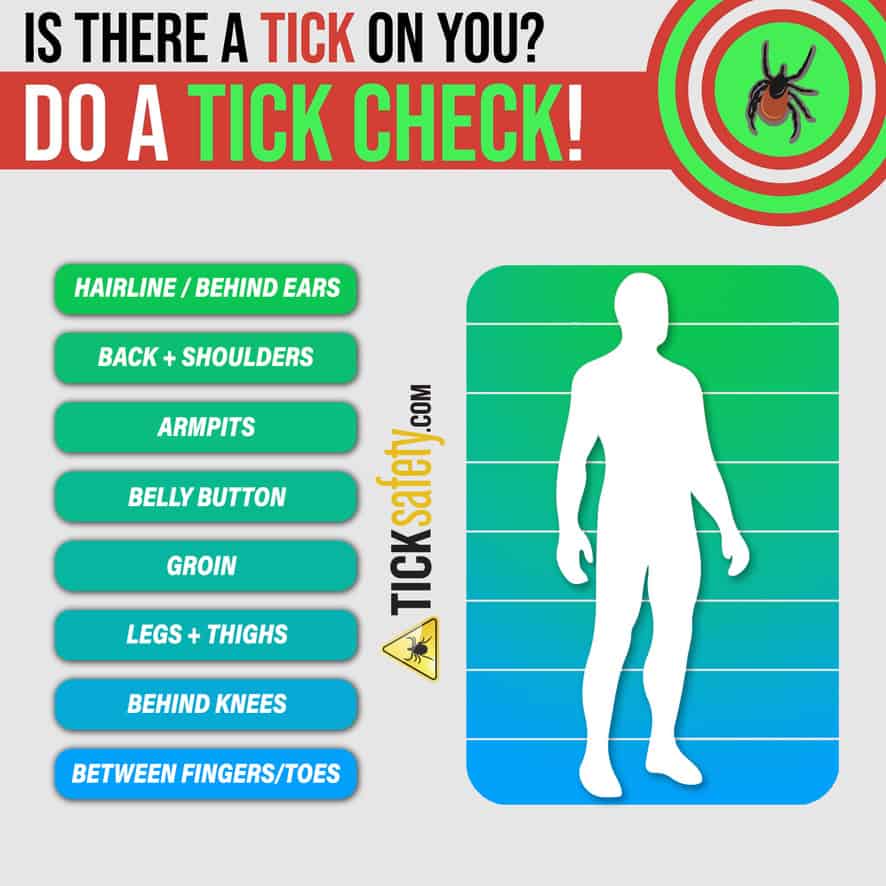How to do a Tick Check
When Checking for Ticks, Remember To:
- When you come in from outdoors, do a tick check and thoroughly check all over your body for ticks; including your groin, head, and underarms. Comb your hair with a fine-toothed comb, or have someone check your scalp.
- To remove ticks from clothing, put your clothes in a hot dryer or hang them out in the sun on a hot day for at least 15 minutes. The heat can kill the ticks. Also check for ticks on any gear you had with you in the woods.
- Do a tick check on children daily for ticks, especially during the summer months.
- Doing a tick check on your pets may be somewhat difficult, but we strongly recommend doing one every time after they’ve been outdoors. Your pets can carry infected ticks indoors where they might fall off your pet and attach to you.

Reducing exposure to ticks is the best defense against Lyme disease, Rocky Mountain spotted fever, and other tick-borne infections such as the newly discovered Alpha-Gal disease which causes an anaphylactic allergic reaction to red meat and pork! There are several approaches you and your family can use to prevent and control Lyme disease:
- While it is a good idea to take preventive measures against ticks year-round, be extra vigilant in warmer months (April-September) when ticks are most active.
- Avoid direct contact with ticks by avoiding wooded and bushy areas with high grass and leaf litter. Always walk in the center of trails when possible.
- Repel ticks with DEET or permethrin. Use repellents that contain at least 20-30% DEET (N, N-diethyl-m-toluamide) on exposed skin and clothing for protection that lasts up to several hours. Always follow product instructions.
- Permethrin should only be applied to clothing. Treat clothing and gear, such as boots, pants, socks and tents with products containing 0.5% permethrin. It remains protective through several washings. Pre-treated clothing is available and may be protective longer. Other repellents registered by the EPA may be found online at https://cfpub.epa.gov/oppref/insect.
![]()
If you find a deer tick on yourself or a loved one, SAVE IT and get it tested for Lyme Disease! It’s much faster and more accurate than getting a person tested.
 While adult ticks are the easiest to identify by species, immature stages of ticks may also transmit some pathogens. In addition, male and female ticks of the same species may look different. Of the many different tick species found throughout the world, only a select few bite and transmit disease to humans.
While adult ticks are the easiest to identify by species, immature stages of ticks may also transmit some pathogens. In addition, male and female ticks of the same species may look different. Of the many different tick species found throughout the world, only a select few bite and transmit disease to humans.
Need Advice? Have Questions?
We’re here to help and answer any Questions you’ve got about
Ticks, Tick Safety or Testing Ticks for Lyme Disease!
Call or TXT (703) 828-4343



